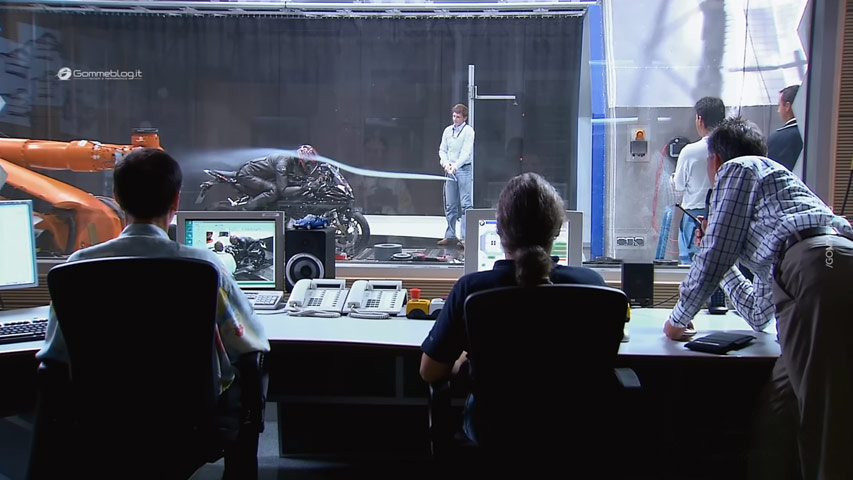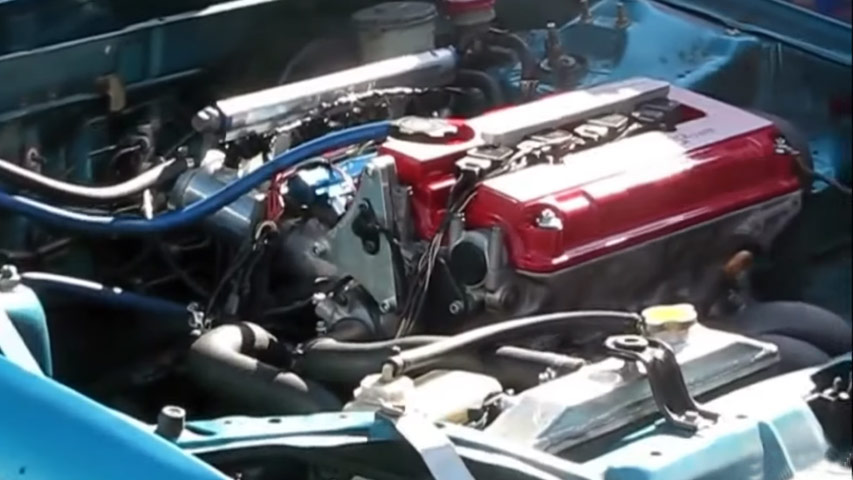Honda l13z1 I-VTEC
We may be familiar with Honda as one of the Japanese car manufacturers. Or to know more than that, some of the products of this company have been able to sell well in the American market and other countries. But more than that, the fact that Honda is known as the best motorcycle manufacturer in the world and is known in the field of manufacturing heavy industry machines is interesting.
Honda company was founded in 1906 by Soichiro Honda. Soichiro Honda’s experience in forging and repairing cars and motorcycles helped him create a company that would increase its market first by producing bicycles, then by producing motorcycles, and then by producing cars.

But what we should remember about Honda is that Honda is known as the largest engine manufacturer in the world.
The range of production of various engines from motorcycles to cars, airplanes, jets, ships and boats, and the production of smart robots in this era shows what power Honda has in the technology of engine manufacturing.
L13Z1 i-VTEC Engine :
At the end of the last century, Honda car enthusiasts got acquainted with an extension for Honda engines. He was the only title that Honda used to refer to Honda’s new series of engines at that time.
VTEC stands for Variable value Timing and lift Electronic Control System. In the late 1980s, with the aim of increasing the efficiency of Honda engines, the engineer of Honda company, Ikuo Kajitani, used this method to better control the air valves and smoke valves in order to increase the output power of the engine while reducing fuel consumption. Based on this design, in order for poppet valves to work faster in the engine, the rotating cams placed on the camshaft should hit the rocker arms and move them.
Before this innovation, Honda engines had good efficiency in low revs despite the small cams of the engines. But as soon as the engine revs up, the amount of incoming oxygen did not enter the cylinder chamber enough. In this case, fuel consumption was not optimized and most cars were not designed due to the lack of plans to design camshafts in order to save fuel. However, one of the reasons for the lower price of fuel compared to the present time was that it did not apply the need to create sensitivity in fuel consumption.
1.3 L13z1 I VTEC Turbo
Honda engineers have paid special attention to increasing the efficiency of their engine. Designing an engine that uses two camshafts. Bigger cams that are designed to be placed between the simple camshafts, so that all the camshafts hit the lever with each rotation of the camshaft by the Rocker Arm.
But in the design of Honda turbocharged engines, these larger cams are located only on the camshaft corresponding to the poppet valves.
The reason is that in turbocharged engines, enough air is fed to the engine and there is no need for bigger cams for this. But in the next step, in order to be able to remove the smoke from the cylinder chamber faster, larger cams help, so these big cams are placed on the camshafts of the smoke valve.

L13z1 i vtec Specs
Honda uses 4 cylinders and 16 poppet valves to produce the A engine.
V-TEC technology is also used here so that at high speeds, as soon as your foot is on the gas with more power, the car computer (ECU) recognizes that it should take control of the cams according to this technology. Based on this, the car computer sends a message to the solenoid control valve.
In this case, the levers connected to the cam control the valves. And by deactivating the smaller cams, they make them watch so that the big cams open and close faster to deliver more air to the cylinder chamber for combustion.
This action continues until you take your foot off the gas pedal. At the same time, the ECU realizes that the need for oxygen is reduced and by deactivating the larger cams, it reactivates the small cams.
L13z1 i vtec Horsepower
The L13z1 i vtec engine produces 100 hp and 128 N.m. This amount has created low fuel consumption for economic cars such as Hyundai Civic while increasing efficiency and reducing friction.
However, with the improvement of VTEC technology, Honda presented different versions of VTEC to the market with the titles of VTEC-E, i-VTEC, VTC, i-VTECi, which have different efficiency and fuel consumption.
But the L13z1 i vtec engine with a combined fuel consumption of 5.5 liters per 100 km is a good economic engine for family and economic use.

L13z1 i vtec Problems
Even though VTEC technology is considered a great advantage for high engine speed (RPM), it should be noted that along with all the good things, it can also have problems. A few items are very important in the design of the profile of the cams.
Important factors include lift, diversion, scissor angle, and valve size.
Lift is defined as the amount of opening of the poppet valve. Accordingly, the wider the tip of the cam becomes and leaves its sharp state, the greater the opening of the valve, and as a result, the air needs more time to enter the cylinder.
On the other hand, the scissor angle when both the air valve and the smoke valve are in the same cylinder at the beginning of the suction cycle is still the value of the smoke valve open. The opening of the smoke valve is due to the fact that at high engine RPM (more than four thousand RPM), this causes the combustion chamber to be better emptied of smoke after combustion.
This helps in high engine RPM, but as soon as the foot is removed from the gas pedal to a large extent, the engine speed decreases , The high pressure and temperature created by the combustion returns to the cylinder and causes the torque to decrease at low engine RPM.



